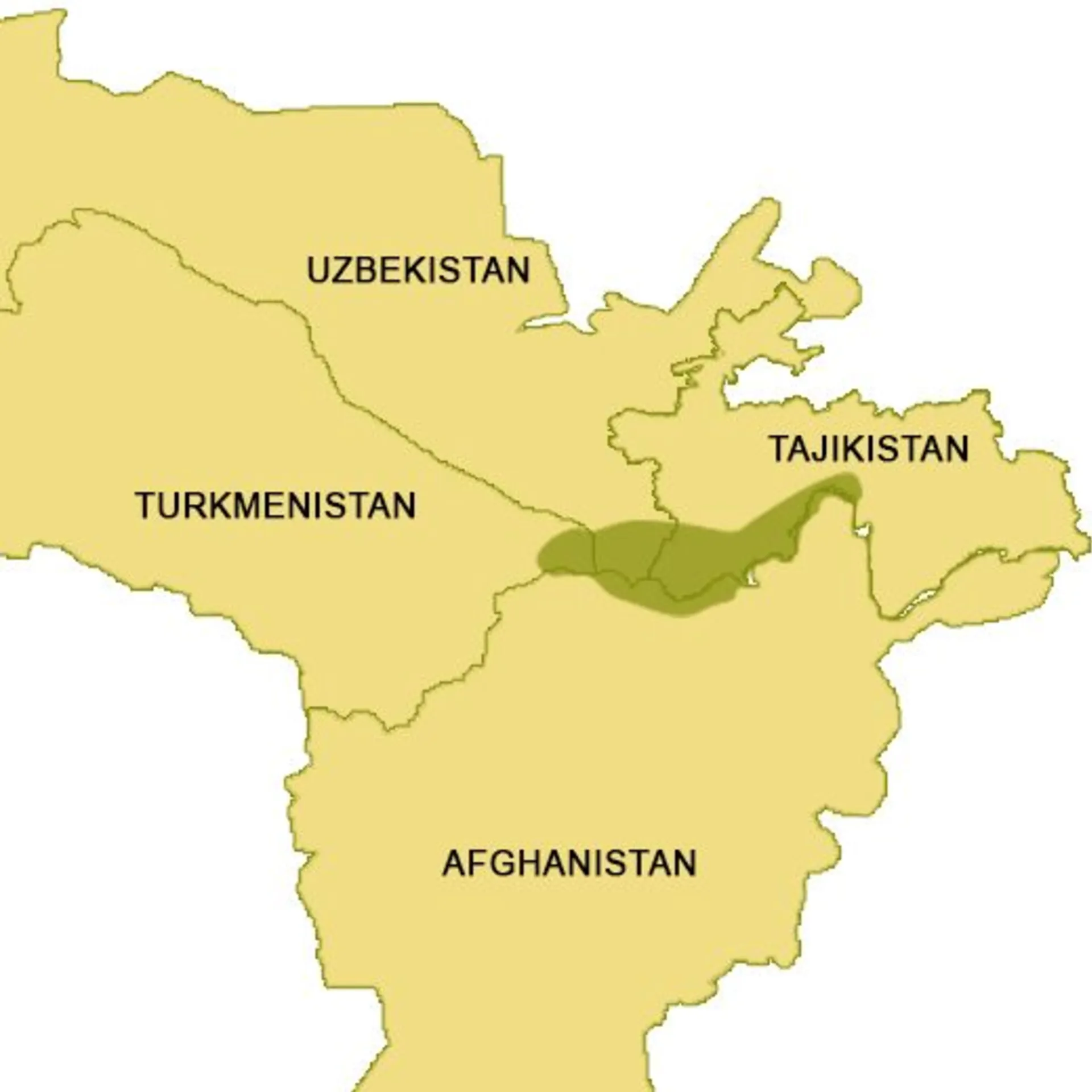Overview
The Bukharan Markhor, a subspecies of the Markhor, is a large wild goat native to Central Asia, particularly in Tajikistan, Uzbekistan, Turkmenistan, and northern Afghanistan. It is distinguished by its impressive spiral horns, which can grow up to 160 centimeters in males, and its long, shaggy coat. The coat color varies seasonally, from reddish-brown in summer to grayish-brown in winter. Bukharan Markhors are adapted to rugged mountainous terrain, often at 600 to 3,600 meters.
These animals are known for their remarkable climbing abilities and ability to easily navigate steep and rocky slopes. Bukharan Markhors are primarily diurnal, foraging in the early morning and late afternoon. They live in small herds, usually comprised of females and their young, while adult males tend to be more solitary or form smaller bachelor groups. The species plays a crucial role in their ecosystem, aiding seed dispersal and serving as prey for large carnivores like snow leopards.
Bukharan Markhors face habitat loss and poaching threats despite their agility and robust nature. Overhunting for their unique horns and meat has historically reduced their numbers. Additionally, competition for food with domestic livestock and habitat fragmentation due to human activities have further endangered their populations. Conservation efforts are in place to protect these magnificent animals and their natural habitats.
Taxonomy
Kingdom
Phylum
Class
Order
Family
Genus
Species
Sub Species
Type
Current distribution:
The Bukharan Markhor's current distribution is limited to parts of Central Asia, including Tajikistan, Uzbekistan, Turkmenistan, and northern Afghanistan. Their populations are fragmented and often confined to isolated mountain ranges. These areas are typically found in remote and inaccessible regions, which has helped protect them from excessive hunting and habitat encroachment.
Conservation efforts have been focused on these key areas to preserve the remaining populations. Protected areas and wildlife reserves safeguard the Bukharan Markhor and its habitat. Despite these efforts, the species' range has dramatically decreased from its historical extent, and continued conservation action is required to ensure its survival.
Physical Description:
Bukharan Markhors are renowned for their striking appearance, notably their long, twisted horns. In males, these horns are substantial and spiral elegantly, while in females, they are shorter and more straight. The coat of the Bukharan Markhor undergoes a seasonal change, thickening and becoming lighter in color during the winter to provide insulation against the cold. In summer, the coat becomes shorter and darker, helping the animal to stay cool.
Males are significantly larger and more robust than females, with a more pronounced beard and longer hair on the neck, chest, and shoulders. The body structure of the Bukharan Markhor is well-suited to its mountainous habitat, with powerful and agile limbs for climbing and navigating rough terrain. Their keen eyesight and hearing are vital for detecting predators and navigating the rugged landscapes they inhabit. During the rut, males display impressive horns and physical prowess to attract females and assert dominance.

Lifespan: Wild: ~12 Years || Captivity: ~20 Years

Weight: Male: 200-240 lbs (90-110 kg) || Female: 75-110 lbs (35-50 kg)

Length: Male: 55-65 in (140-165 cm) || Female: 48-57 in (122-145 cm)

Height: Male: 38-40 in (97-102 cm) || Female: 32-36 in (81-91 cm)

Top Speed: 10 mph (16 km/h)
Characteristic:
Native Habitat:
Bukharan Markhors are native to the mountainous regions of Central Asia, where they inhabit rugged terrain characterized by cliffs, rocky outcrops, and sparse vegetation. They are found at various elevations, often in areas that humans and other predators find difficult to access. Their preferred habitats provide food and protection from predators and harsh weather conditions.
These animals are well-adapted to life in extreme environments, from scorching summers to freezing winters. They are typically found in open woodland, grassland, and scrubland regions, which offer a mix of foraging opportunities and cover. The preservation of these habitats is crucial for the survival of the Bukharan Markhor, as they are highly specialized to these specific ecological conditions.
Climate Zones:
Biomes:
Biogeographical Realms:
Continents:
Countries:
Diet:
Diet & Feeding Habits:
The Bukharan Markhor is an herbivore, primarily feeding on various grasses, leaves, herbs, and shrubs. They stand on their hind legs to reach leaves and twigs, showcasing their adaptability in foraging. Their diet varies with the seasons, consuming more shrubs and trees in the winter when grasses are scarce. Their four-chambered stomach allows them to digest tough plant fibers efficiently and maximize nutrient absorption.
In their harsh mountain habitats, food availability can fluctuate greatly, but Bukharan Markhors have evolved to survive these challenging conditions. They often travel long distances in search of food, covering diverse terrains. Their feeding habits have a direct impact on the vegetation patterns of their habitats, playing a role in shaping the ecological balance of their mountainous ecosystems.
Mating Behavior:
Mating Description:
The Bukharan Markhor has a polygynous mating system, where dominant males mate with multiple females. During the rutting season, males display impressive strength and dominance to attract females. This includes clashing their horns in combat with other males, a dramatic and sometimes dangerous activity. The most dominant and physically fit males are typically more successful in securing mating opportunities.
The breeding season usually occurs in the late autumn or early winter. After a gestation period of about 135 to 170 days, females give birth to one or two young, usually in secluded areas to protect them from predators. The young are well-developed at birth and can follow their mothers over rugged terrain within a few days. Maternal care is crucial for the survival of the young, especially in the harsh mountainous environment.
Reproduction Season:
Birth Type:
Pregnancy Duration:
Female Name:
Male Name:
Baby Name:
Social Structure Description:
Bukharan Markhors typically live in small groups, with females and their offspring forming herds, while adult males are often solitary or in bachelor groups. The social structure changes seasonally, particularly during the rut, when males join female groups to mate. These herds provide a degree of protection against predators and aid in locating food and water sources.
Social interactions among Bukharan markers include a range of vocalizations, scent markings, and body postures. Hierarchies are established within groups, particularly among males during the breeding season. The social dynamics of these herds are crucial for their survival, especially in the challenging environments they inhabit.
Groups:
Conservation Status:
Population Trend:
The Bukharan Markhor is classified as Endangered by the IUCN, with a decreasing population trend. The primary threats to their survival are habitat loss and fragmentation, overhunting, and competition with domestic livestock for food. Despite legal protection, illegal hunting for their distinctive horns and meat continues in some areas, contributing to their decline.
Conservation efforts, including establishing protected areas and anti-poaching measures, have protected the remaining populations. Community-based conservation initiatives have also been implemented, involving local communities in protecting and managing Bukharan Markhor habitats. These efforts have had some success, but the species remains at risk, and continued conservation action is essential.
Population Threats:
The Bukharan Markhor faces several significant threats, the most severe being habitat loss due to human encroachment and development. Overhunting for their unique horns, prized as trophies, and for their meat has historically reduced their numbers significantly. Competition for grazing land with domestic livestock is another major challenge, reducing food availability and habitat degradation.
Other threats include illegal poaching and the impact of climate change, which may alter their mountainous habitats and affect food sources. The isolated nature of their populations also increases their vulnerability to genetic inbreeding and disease outbreaks. Conservation strategies must address these multiple threats to ensure the species’ survival.
Conservation Efforts:
Conservation strategies for the Bukharan Markhor focus on habitat protection, anti-poaching initiatives, and community involvement. Establishing protected areas and wildlife reserves has been key in providing safe habitats for these animals. Efforts are also being made to enforce hunting regulations and control illegal poaching.
Community-based conservation projects have been successful in some regions, engaging local communities in conservation efforts and sustainable development. These projects include raising awareness about the species’ ecological importance and developing alternative livelihoods to reduce dependence on hunting. Captive breeding programs and scientific research are also part of the conservation approach, contributing to the understanding and management of the species.
Additional Resources:
Fun Facts
- The Bukharan Markhor’s spiral horns are among the most distinctive in the animal kingdom.
- They are skilled climbers, able to easily navigate steep and rocky mountain terrain.
- Bukharan Markhors can consume salt and mineral deposits found in their mountain habitats.
- They have a unique coat that changes color and thickness with the seasons.
- The species is known for its agility and sure-footedness in high-altitude environments.
- The Markhor is often revered and respected in local folklore for its strength and beauty.
- Their name ‘Markhor’ is derived from Persian, meaning ‘snake eater,’ a reference to the shape of their horns.
- Conservation efforts for the Bukharan Markhor have become a model for community-based wildlife management.
- The species plays a vital role in their ecosystem, influencing vegetation growth and serving as prey for large carnivores.
- Observing these elusive animals in the wild is considered a rare and special experience for wildlife enthusiasts.
















































































